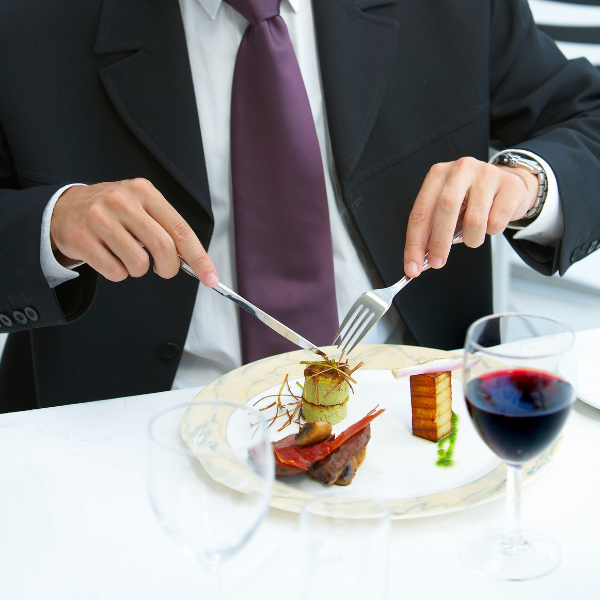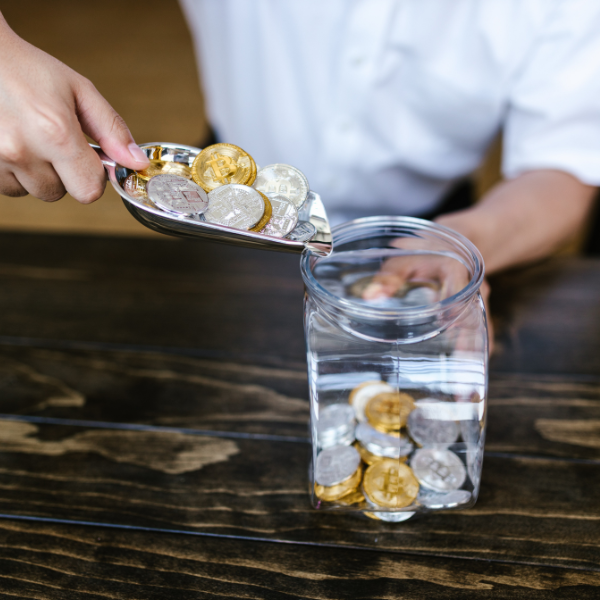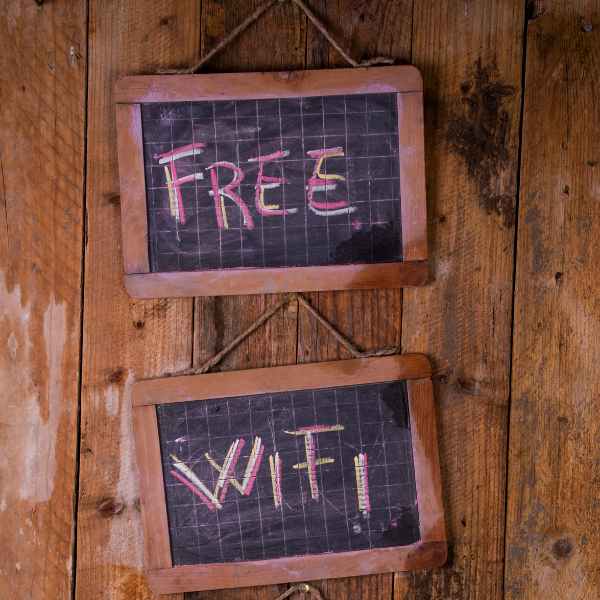An essential factor in any restaurant's success is its lighting. A well-designed lighting scheme not only highlights your unique architectural and interior features but can also create an atmosphere that invites and engages customers. Of course, good lighting is crucial for staff as they provide service efficiently and seamlessly. In this article, we will answer some critical questions and showcase the best lighting strategies, ensuring your restaurant not only looks great but functions smoothly.
Why Is It Important To Have Good Lighting In A Restaurant?
Understanding why good lighting is important in a restaurant is key to creating the perfect atmosphere. It plays a substantial role in setting the mood, influencing guests' emotions, and, ultimately, affecting their dining experience. With the right lighting design, your restaurant can evoke feelings of relaxation, excitement, or sophistication, tailored to your target clientele.
Ambiance in a restaurant goes beyond just music and decor. One factor that often gets overshadowed is lighting. While it may seem merely functional, studies have shown that restaurant lighting can profoundly affect a customer's dining experience. In the gastronomic realm, good lighting does more than merely illuminate; it sets a scene, tells a story, and shapes memories, influencing customer behavior and sentiment considerably.
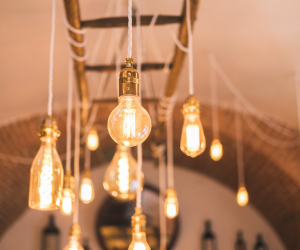
Sets The Mood
The right balance of lighting in a restaurant can alter an individual's mood dramatically. Too harsh, and it gives off an unwelcome, uncomfortable vibe; too dim, and it may strain the eyes and make menu reading a Herculean task. However, when done right, lighting carefully orchestrates a delicate dance between shadows and light, crafting an ambiance that calms, soothes, excites, or energizes, depending on the restaurant's theme.
For example, a fast-food restaurant might use bright, welcoming lighting to instill a sense of energy and speed, mirroring their service style. In contrast, a high-end, elegant dining spot may choose a subtler, dim lighting style, fostering a calm and sophisticated atmosphere that complements the elevated dining experience.
Influences Emotions
Visually pleasing environments can stimulate positive emotions in occupants. This isn’t just an observation but psychologically and scientifically proven. Lighting also plays a pivotal role in creating these environments. The right lighting can enhance a customer's joy and satisfaction, making the food and drink seem tastier and the atmosphere more appealing.
For instance, soft, warm light tends to comfort and relax guests, making them feel welcome and encouraging them to stay longer, possibly ordering more. On the other hand, cooler, brighter lighting may stimulate alertness and conversation, perfect for bustling cafes or eateries, where upbeat, lively interaction is part of the experience.
Shapes The Dining Experience
The importance of lighting in hospitality expands beyond mood-creation and interior aesthetics. It also significantly impacts the practical aspects of the dining experience. Good lighting should allow guests to read menus easily, appreciate the color and texture of their food, and navigate safely around the restaurant.
Furthermore, well-considered lighting can accentuate your restaurant's architectural features, emphasize table settings, and highlight artwork, subtly contributing to the overall customer experience. Restaurants can also use lighting to strategically draw attention to certain areas, like a live cooking station, or away from less attractive zones.
How Lighting Influences Your Customers
To maximize the potential of lighting, it's important to consider the customer's perspective, preferences, and needs. The lighting needs for a family-friendly restaurant, bustling brunch spot, and a romantic date-night venue will all differ. Customizing your lighting design to match the needs and expectations of your target clientele is key.
Ultimately, the impact of good lighting on customers is about weaving a visual story that complements the gastronomical journey. It's about creating multiple layers of the dining experience that seamlessly blend functionality, aesthetics, and emotion. A cleverly lit space is one where all of these elements harmonize to enhance the customer's experience, fostering better customer satisfaction, increased footfall, and higher revenues for restaurants.
Understanding the Four Types Of Lighting
If you're wondering about the four types of lighting to incorporate in your restaurant, look no further. Each type plays a significant role in your establishment, and the key is finding the right combination for your specific needs.
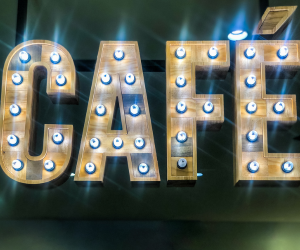
- Ambient Lighting: This is the primary source of light and is used to create a general level of brightness in your space. Ambient lighting provides a consistent and comfortable level of illumination, setting the overall mood for your dining area.
- Task Lighting: This lighting focuses on a specific purpose or activity, like illuminating the kitchen work areas or the host's stand. The effective use of task lighting ensures ease of movement and navigation, as well as the staff's safety and efficiency.
- Accent Lighting: Used to highlight specific features, such as artwork, culinary presentations, or unique architectural elements, accent lighting is often employed in conjunction with other types of lighting. It can enhance the overall ambiance of your restaurant and leave a memorable impression on your patrons.
- Decorative Lighting: This lighting can make a statement, adding a personal touch to your restaurant's overall design scheme. Examples include chandeliers, wall sconces, or letter lights, which serve both functional and aesthetic purposes.
Choosing The Best Light Source
When selecting the best light source for a hotel or restaurant, it's important to consider energy efficiency, color quality, and lifespan. LED lights have become increasingly popular, thanks to their excellent performance, long life, and low power consumption.
Lux Level: Determining The Right Intensity
To create an ideal atmosphere in your restaurant, it is essential to know the recommended lux levels for different spaces and work areas. Lux levels refer to the amount of illumination provided over a surface. A general guideline includes:
- Dining areas: 150-200 lux
- Bar counters: 200-300 lux
- Food preparation areas: 500 lux
- Dishwashing and storage areas: 200-300 lux
However, these recommendations can vary depending on the specific lighting effects and ambiance preferences for your establishment.
Ten Commandments For Lighting Your Restaurant
Taking inspiration from the 10 rules to light up a restaurant, here are some essential guidelines to follow when determining your lighting strategy:
- Understand your brand and clientele.
- Showcase your restaurant's architectural features.
- Design zones with specific lighting schemes.
- Use layering and integrate multiple lighting types.
- Employ LED lights for energy efficiency.
- Utilize dimmers for flexibility and mood setting.
- Prioritize appropriate lux levels based on functionality.
- Coordinate lighting colors to enhance the aesthetic appeal.
- Highlight focal points or centerpieces.
- Update lighting schemes periodically to stay current and fresh.
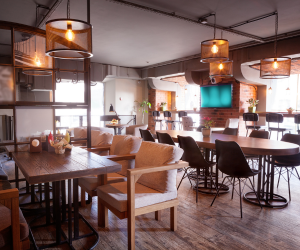
What Are The Things To Keep In Mind While Creating A Design Plan?
The primary step for a good lighting setup at your restaurant is to create an apt design plan according to your needs and desires. Mentioned below are few of the steps you can follow to create the perfect lighting design plan:
- Determine your restaurant's main objectives and atmosphere.
- Collaborate with professionals, such as lighting designers, architects, and interior designers.
- Survey your space and establish your light layering approach.
- Select the appropriate lighting types, fixtures, and sources for your establishment.
- Define lux levels for different spaces and work areas.
- Develop a detailed plan and timetable for implementation.
Make Your Establishment Shine
By incorporating different types of lighting, setting appropriate lux levels, and carefully considering the overall ambiance, you can create a unique and memorable experience for your patrons. Always keep in mind that an inviting atmosphere, combined with excellent food and service, will keep customers returning to your establishment, driving long-term success.




